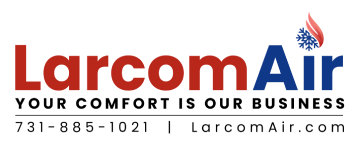Summer can bring sunshine, vacations, and pool days—but it also brings sweltering heat that can turn your home into an oven. Cranking up the air conditioning is an easy fix, but it can lead to high energy bills. Fortunately, there are practical, energy-efficient ways to keep your home cool without breaking the bank. Here are some tried-and-true tips to help you stay comfortable all summer long.
1. Close Curtains and Blinds During the Day
One of the easiest ways to reduce indoor temperatures is by blocking out direct sunlight. About 30% of unwanted heat comes from your windows. Keep blinds, curtains, or shades closed during the hottest parts of the day—especially on south- and west-facing windows. Consider blackout curtains or reflective window films for even better results.
2. Use Ceiling Fans Wisely
Ceiling fans don’t actually cool the air, but they create a wind-chill effect that helps your body feel cooler. In summer, set your ceiling fan to spin counterclockwise to push cool air down. You can raise your thermostat by a few degrees and still stay comfortable when fans are running.
3. Seal Air Leaks and Improve Insulation
Cool air can easily escape through poorly sealed doors, windows, and attics. Seal cracks with caulk or weatherstripping, and make sure your attic is properly insulated. This helps keep the hot air out and the cool air in, improving both comfort and energy efficiency.
4. Switch to Energy-Efficient Lighting
Traditional incandescent bulbs give off a lot of heat. Swap them out for LED or compact fluorescent lights (CFLs), which produce much less heat and use less energy. It’s a small change that can make a noticeable difference in room temperature and your electricity bill.
5. Limit Appliance Use During Peak Heat
Appliances like ovens, stoves, dishwashers, and dryers generate a lot of heat. Try cooking outdoors or using a microwave or toaster oven instead of heating up your kitchen. Run dishwashers and laundry machines at night when it’s cooler outside.
6. Maintain Your HVAC System
An efficient air conditioner is crucial in hot weather. Replace your HVAC filters every 1–3 months to ensure proper airflow and system performance. Schedule a yearly tune-up to keep the system running smoothly and prevent breakdowns during the peak of summer.
7. Install a Programmable Thermostat
Programmable or smart thermostats help regulate temperatures and reduce cooling costs. You can set the thermostat to a higher temperature when you’re away and have it cool the house before you return. Some models even learn your habits and adjust automatically.
8. Use Natural Ventilation in the Evenings
If temperatures drop at night, take advantage of natural ventilation. Open windows and use window or attic fans to pull in the cool air and push out warm air trapped inside. Just be sure to close everything up again in the morning to keep the cool air in.
By combining a few of these strategies, you can significantly reduce your home’s temperature and energy usage. Staying cool in the summer doesn’t always mean blasting the AC—it’s about working smarter, not harder.
